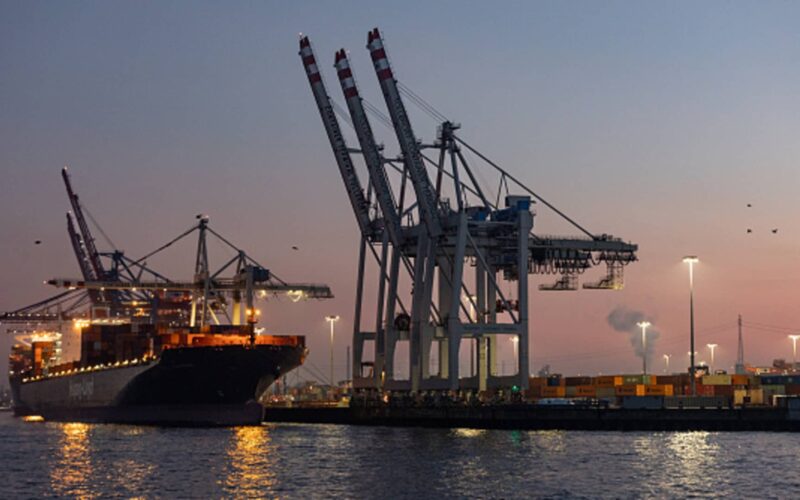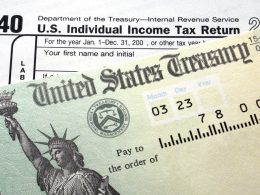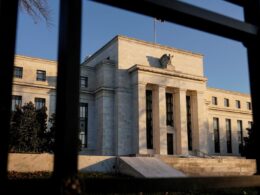A container ship at the Port of Hamburg in Hamburg, Germany.
Maria Feck/Bloomberg via Getty Images
President Donald Trump is planning to unveil reciprocal tariffs on Wednesday to retaliate against trade practices his administration deems unfair or discriminatory. Among the grievances is the “value-added tax,” or VAT, which Trump called “far more punitive” than tariffs in a Feb. 15 post on Truth Social.
Many economists, however, disagree with that characterization.
“It would be complete nonsense” to levy a tariff on U.S. trading partners in response to a value-added tax, said Erica York, an economist and vice president of federal tax policy at the Tax Foundation.
“A value-added tax does not distort trade,” York said. “It’s not a protectionist measure, so it makes no sense to retaliate against a VAT.”
The White House didn’t respond to a request from CNBC for comment.
The precise scope of reciprocal tariffs are unclear. President Trump suggested in recent weeks, for example, that there might be flexibility on reciprocal tariffs, but on Sunday he said that the tariffs would “start with all countries.”
What is a VAT?
Value-added taxes are a tax on domestic consumption, like retail sales taxes charged by U.S. state and local governments.
VATs are the most common type of consumption tax in the world, used by more than 80% of nations, Youssef Benzarti and Alisa Tazhitdinova, economists at the University of California, Santa Barbara, wrote in a 2019 paper for the National Bureau of Economic Research.
More than 170 countries worldwide use VATs, according to the European Commission.
The U.S. is the only nation in the Organisation for Economic Co-operation and Development that uses a retail sales tax (rather than a VAT) as its main consumption tax, according to the OECD, which consists of 38 member countries.
VAT rates vary by country. Most European nations charge roughly 20%, for example, though the rate ranges from an 8.1% low in Switzerland up to 27% in Hungary, according to the Tax Foundation.
The average state and local sales tax rate is 7.5% in the U.S, the Tax Foundation said.
Why VATs aren’t like tariffs, economists say
Value-added taxes are different than tariffs, economists explain.
Nations apply VATs equally, regardless of where a good was produced. Foreign nations apply the same tax on domestic goods and imported U.S. products.
More from Personal Finance:
Why tariffs are ‘simply inflationary’
Tariffs are ‘lose-lose’ for U.S. jobs and industry
Trump’s tariffs showcase presidential power and limitations
By comparison, foreign tariffs may put U.S. goods at a relative disadvantage: U.S. goods are hit with an import tax but there wouldn’t be an equivalent duty on domestic goods.
Put simply, VATs don’t discriminate based on product origin, while tariffs do, economists said.
“What’s confusing — and, to be honest, just misplaced — [about the White House stance] is a VAT isn’t discretionary: It applies to domestic output as well as imports,” said Bradley Saunders, a North America economist at Capital Economics. “It’s not protectionist.”
How VATs and U.S. sales taxes are different
The OECD considers retail sales taxes and VATs to be in the same category: “taxes on general consumption.”
While consumers bear the ultimate cost of each, the taxes are collected differently, economists said.
The end consumer pays U.S. sales tax when they purchase a product.

By contrast, businesses pay VATs in stages across the supply chain, according to the business’ respective “value add.” Businesses get a tax break for their portion of the VAT, and the end consumer ultimately bears the tax cost, according to the International Chamber of Commerce.
VATs around the world are “border adjustable,” according to Eric Toder, a non-resident fellow at the Urban-Brookings Tax Policy Center.
That means a nation’s exports are exempt from value-added taxes, while imports (from the U.S., for example) are taxable, he wrote.
The World Trade Organization doesn’t view this as a trade barrier, economists said.
“The academic consensus is that adjusting VATs at the border — by levying VATs on imports but exempting exports — does not distort trade flows as long as imported goods are subject to the same VAT rate as domestic goods,” wrote Benzarti and Tazhitdinova of UC Santa Barbara. “For this reason, VATs, as they are currently implemented, are considered to be trade neutral and the [WTO] allows border adjustment of VATs.”
Source link









